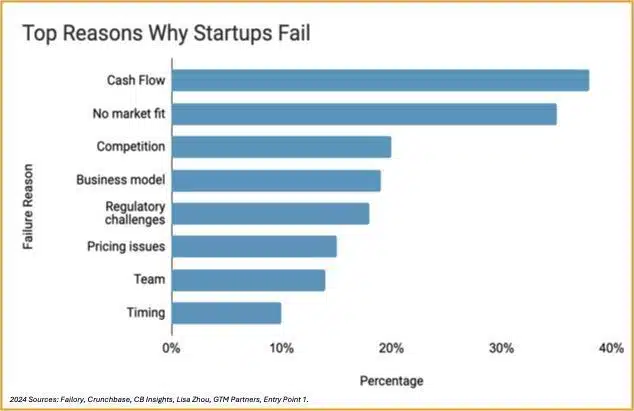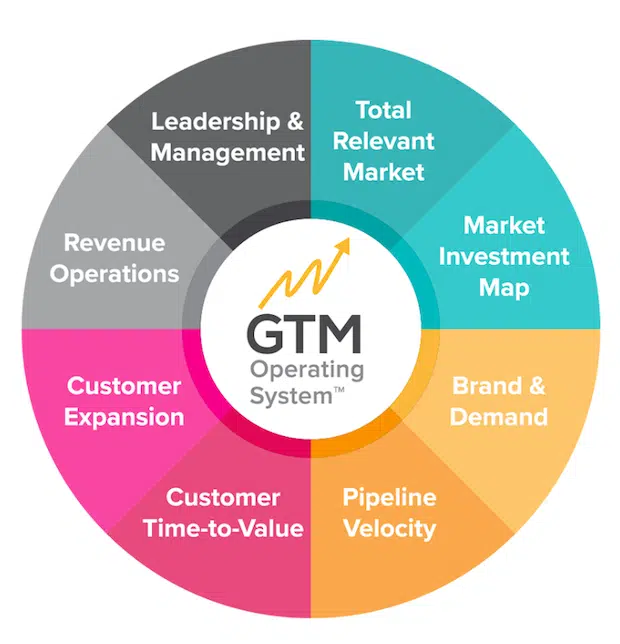Rethinking fit, growth and go-to-market for the modern startup
Strategies for aligning product, sales, marketing and customer success teams during the problem-market fit stage.
What got your company here won’t necessarily help you in your next stage of growth. This reminder remains particularly relevant in the fast-evolving startup landscape.
Since Marc Andreessen brought “Product-Market Fit” into mainstream startup vocabulary in 2007, this term has been seen as the ultimate goal for startups, often viewed as the holy grail of initial success. The problem? Its interpretation varies widely, leading to strategic misalignments that can quietly derail a company’s growth trajectory.
Modern go-to-market models anchored in business fundamentals are sorely needed in today’s environment — characterized by shifts in customer behavior, economic tightening, significant layoffs in marketing and sales and the advent of generative AI. So, how do startups face modern challenges head-on?
The 3Ps go-to-market maturity model
One framework that’s quite successful is a modern go-to-market maturity model incorporating what we’ve learned since 2007 from leading venture capitalists and companies. Besides providing clarity around different business life-cycle challenges, it also aligns the core revenue team — product, sales, marketing and customer success.
This maturity model, called the 3 Ps, was developed by Sangram Vajre and Bryan Brown in the book “MOVE: The Four Question Go-To-Market Framework.” It aligns GTM effectiveness across three stages:
- Problem-market fit.
- Product-market fit.
- Platform-market fit.
Problem-market fit: The first stage
Let’s dive into the first stage, problem-market fit, and how it can help us align with go-to-market success for early-stage startups — those from seed to B-stage.
Here is an example of what problem-market fit looks like in the real world. This B2B technology company found misalignment within the revenue team creating friction during its outbound go-to-market motion.
“We have a product in-market, but it’s not fully developed and we’re zeroing in on the problem and use cases we should solve. But, because we still sell to anyone within our Total Addressable Market (TAM), our sales and marketing teams sometimes don’t target the same buyer.”
— Marketing Director, B2B Series-A Company
This company aligned sales and marketing processes by building a go-to-market-ready ideal customer profile that was used across the revenue team. By ditching department-based definitions, they smoothed out their process and increased their effectiveness and efficiency.
Problem-market fit is foundational for early-stage companies, serving as a vital part of the ideation process that validates the company’s solution against actual market needs. Much like a teenager transitioning into adulthood, problem-market fit is marked by inefficient growth — growth spurts that may or may not be proportional to the whole. Here, the focus remains tightly on product development and initial market engagement.
During problem-market fit activities, sales, marketing and customer success teams are reactive to customer needs. Why? Because there’s a lack of consistency in how customers discuss their issues. And, there’s no operational standard for what good looks like yet.

Dig deeper: Create a B2B GTM strategy that buyers, execs and revenue teams love
The need for strategic alignment
Before describing the GTM maturity model, let’s take a step back.
- Let’s recognize that building a GTM motion is much more like building a product than a project. It’s an iterative process that helps your company add value to your customers by delivering what you say you do.
- Let’s agree that marketing isn’t GTM but a crucial part of the puzzle. Just like sales isn’t GTM either — it’s another piece. How we assemble the puzzle pieces to make GTM work has been part of the problem — remember our example above?
- Let’s understand that the CEO must own the overall GTM strategy at a startup. Pushing it to someone else just creates internal friction.
Here are the top reasons startups fail.

In problem-market fit, we’re solving for two main questions:
- Does your solution fit the market right now?
- Is the market big enough for your solution?
Most companies are sales-led at the startup stage, relying on founder-led sales and sales heroics. Here, life is reactive, not planned out — part of what draws people to the exciting world of startups and what repels others.
In problem-market fit, you cast a wide net called target addressable marketing (TAM). The company is focused on generating leads, and you’ll sell to anyone who will buy. There is limited repeatability, and much of the sales effort is bespoke.
Because the key focus in this stage of growth is leads, organizing the following metrics into a dashboard can help to measure GTM effectiveness:
- Inbound campaigns and leads.
- Website traffic.
- Qualified conversions.
- lead to qualification rate.
- Outbound engagement rate.
- Outbound opportunities.
To track growth, focus on these KPIs: revenue v. goal, average deal size and opportunity close rate.
Dig deeper: Product-led growth: 3 important lessons from the front line
Problem-market fit: Overcoming challenges
These are the main challenges to achieving problem-market fit. By exploring them further, you’ll learn how to overcome hurdles that hinder startup growth:
- You haven’t found your product’s ICP, preventing you from scaling.
- Product commoditization has you relying on heavy discounting during pre and post-sales.
- Weak positioning and brand cannot fuel demand and win rates.
- Churn is indecipherable — there is no trend or repeatability.
- Ask 10 people and get 10 different answers — there’s no common enemy.
- Product ROI is unclear at customer renewal.
- What you say you sell is not what you deliver.
- Sales cycle repeatability is inconsistent — it’s founder-led and sales heroics.
When you start to see traction that you have the right product, in the right market, for the right customer, you’ll start seeing your growth become more efficient.
Martech stack selection during the problem-market fit stage
Now that we understand the problem-market fit stage, how do we choose our marketing technology tools to help us reach our goals without creating new problems?
Understanding the eight-pillar GTM Operating System will help you build a balanced tech stack and create efficient growth.
- Total Relevant Market: Define your audience.
- Market Investment Map: Define your marketing investments.
- Brand & Demand: Define how you’ll manage brand and demand marketing.
- Pipeline Velocity: Define how you’ll build repeatability across the sales cycle.
- Customer Time-to-Value: Define how customers receive value from your solution.
- Customer Expansion: Define your expansion motion.
- Revenue Operations: Define the single set of truth for your revenue team.
- Leadership & Management: Define OKRs, metrics and employee engagement.

This high-level guide will help you become proactive, not reactive, in architecting your martech stack.
Dig deeper: Will marketing and sales finally align around RevOps and agile go-to-market strategies?
Navigating the complexities of early growth
Adapting the principles of the 3Ps framework to your unique market conditions can help your organization avoid common pitfalls that negatively impact growth. Building alignment across the revenue team — incorporating product, sales, marketing and customer success — is fundamental to your startup’s success, especially given modern organizational structures’ remote and hybrid dynamics.
By solidifying a shared understanding of problem-market fit, startups can build a culture of clarity and cohesion that accelerates their growth trajectory and significantly mitigates the risks of misalignment that often derail startups. This phase isn’t just about growth; it’s about setting the stage for sustainable and scalable success, ensuring every step forward is as strategic as it is impactful.
Dig deeper: 5 go-to-market recommendations for marketing leaders
Opinions expressed in this article are those of the guest author and not necessarily MarTech. Staff authors are listed here.
Related stories
New on MarTech